The order consisted of 5 grades, Grand Cross, Merit
Cross with Star, Merit Cross 1st, 2nd and 3rd Grade as
well as a Merit Medal.
Figure 1: Color Plate as found in
“Das Dritte Reich”, “Das fuenfte Jahr 1937”,
Hummelverlag, Berlin, shows the lineup as created on May
1, 1937, but mistakenly shows the 6 pointed star to the
Merit Cross with Star as star to the Grand Cross. The
Grand Cross star is an eight pointed star
All initially awarded decorations followed a
manufacturer related, specific
design until the first modification of the order’s
statues on April 20, 1939.
It is assumed that the order as well as the medal was manufactured by
Deschler & Sohn in Munich2) or Wilhelm Deumer in
Luedenscheid3). It is assumed that a slight design
changed occurred at or before April 20, 1939, with the
change to its final manufacturer, Godet in Berlin4).
The medals were now coined at either the Berlin or the
Vienna Mint.
Figure 2: Side by side comparison
of the eagle of two grand crosses (1st type to the left,
2nd type to the right)
Figure 3: needle and reverse
design comparison between 1st type to the right and one
of the 2nd types to the left. Two Grand Cross stars.
c)
A simple ring shaped suspender
compared to the fan suspender of the final version.
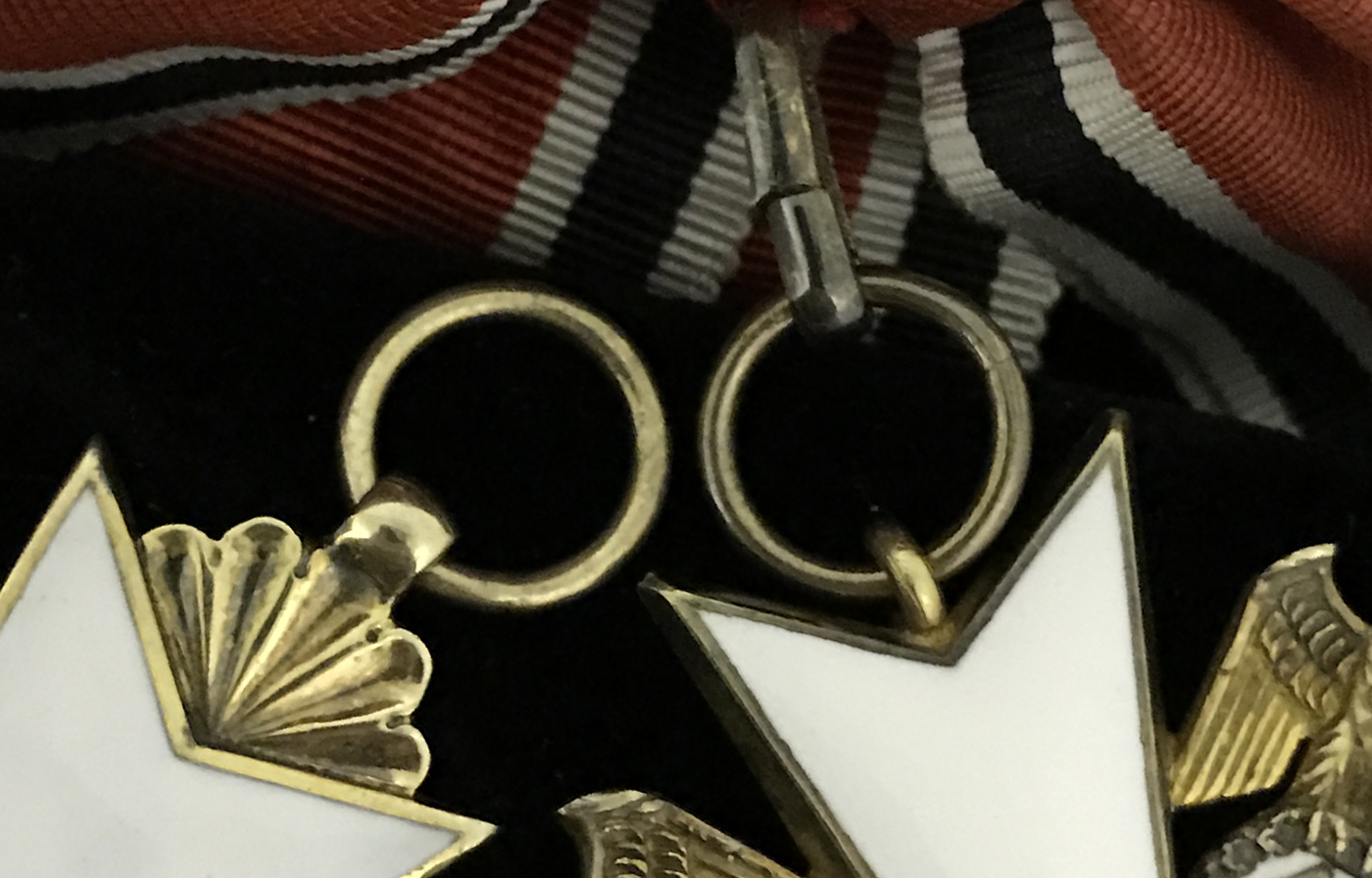
Figure 4: Suspension
comparison (Grand Cross 1st type to the left, 2nd
type to the right)
d)
A metal content mark "900" on the
frame of the lower cross arm of all crosses. The
Grand Cross star as well as the star to Merit Cross show the word "Silber" and the silver content
mark "800", the 2nd Grade shows the silver content
mark "900" and the word “Silber”. The higher silver
content provides a better base for the gilding
process.
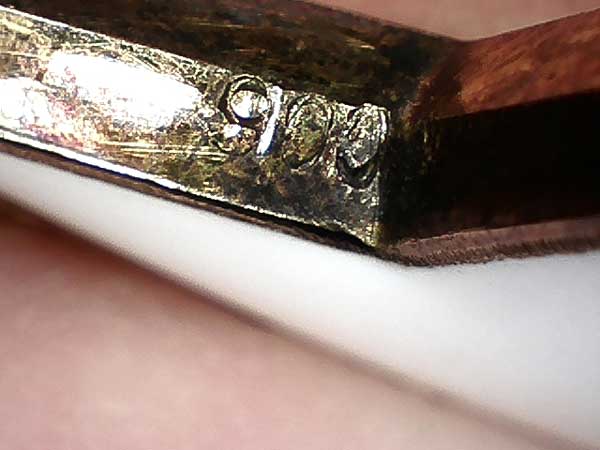
Figure 5: Silver content mark
900 on lower cross arm
Figure 6: Silver content
markings on the 2nd class (right) and either star (left)
e)
the design of the avers of the merit medal shows
clearly not only different proof marks, but has a
completely different appearance due to a stippled
design of the surface within the Maltese cross. The
eagles are identical in design to the ones of the
crosses of the first type.
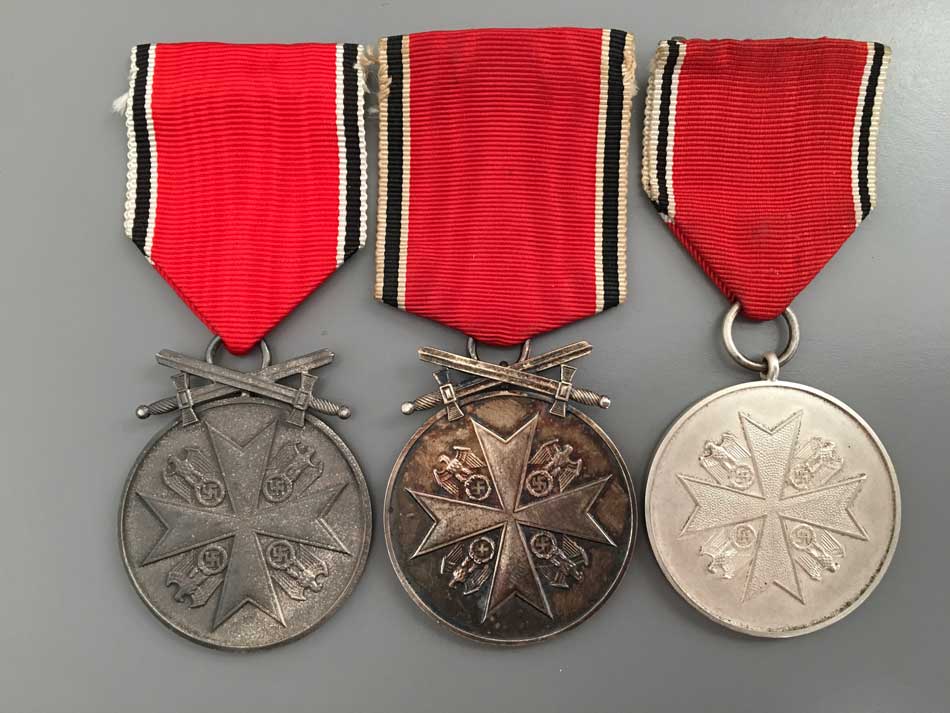
Figure
7: Avers of the Merit Medal to the right in
comparison to the medals with swords of the Vienna
(right) and Berlin mint (middle)
Contrary to the later type
medals, the 1st type shows just a "900" silver
content mark on its rim.
Figure 8: Comparison between
the different medal proof and maker marks. 1st Type
medal to the right.
Adolf Hitler presented Benito
Mussolini on September 28, 1937, with a special
designed Grand Cross during his visit in Munich. The
star of the set was encrusted in diamonds and was
presented in a special case made from silver and
amber.
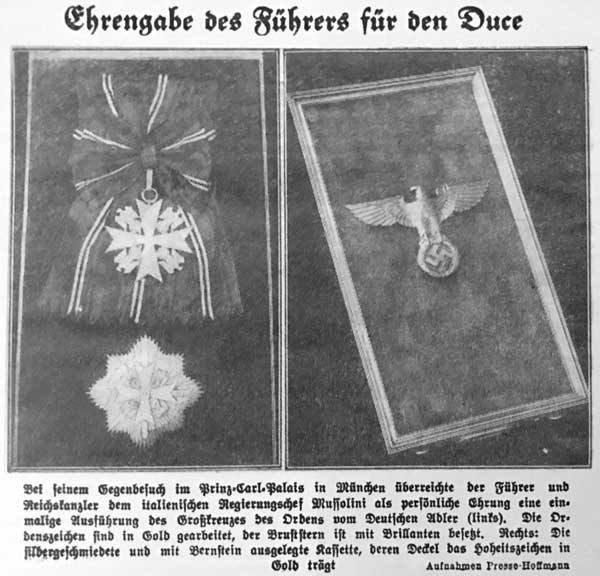
Figure 9: Order set and
case from Muenchner Neuste Nachrichten
Despite the fact that the
statues don’t allow for swords for war merit,
examples can be found with swords, attached in
similar or equal technique as with the final design.
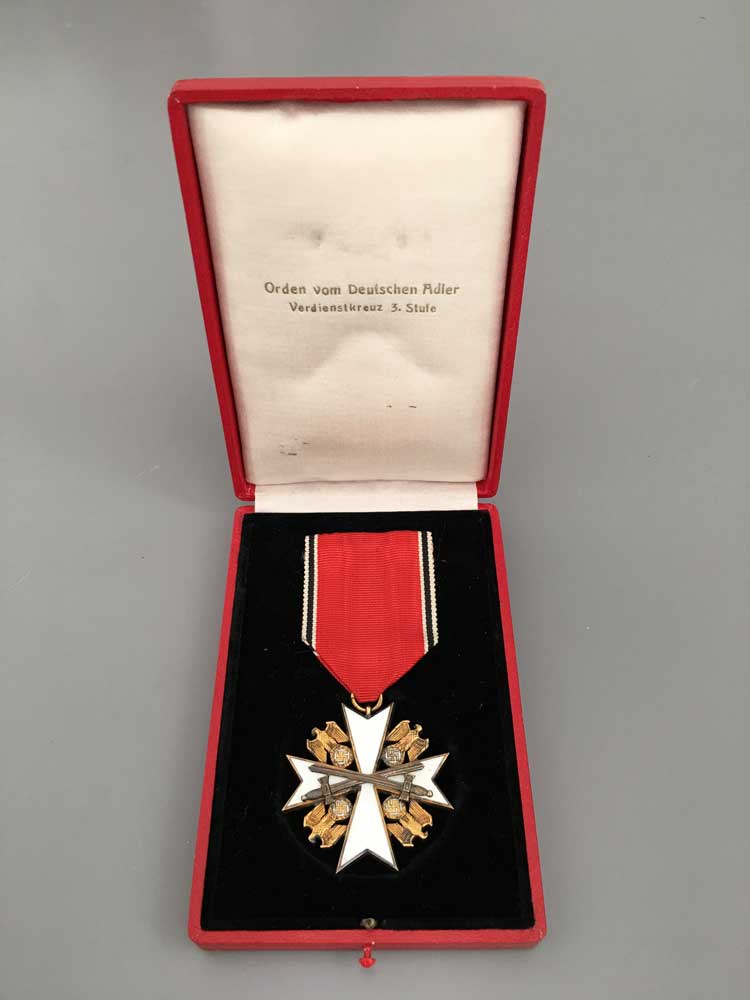
Figure 10: 3rd Grade with
Swords
Figure 10 also shows the
specific description of the order inside the lid of
the award case. All grades are addressed as "Orden
vom Deutschen Adler". The merit Medal shows the
wording "Verdienstmedaille". The cases are generally
larger than those of the following order
decorations. Yet, the transition to the smaller cases
happened already during the timeframe of the 1st
Type.
Who received the order and
its medal during the initial two years of its
existence? The natural circle of recipients belonged
to those living in countries politically close to
the German Reich. Italian and Spanish citizens were
among the first to receive the new order. Yet,
German friendly individuals were on the list to
receive the new honor. The Chicago Tribune published
a list of American recipients under the
title:”…Hitler seeks friends” on November 25, 1938.
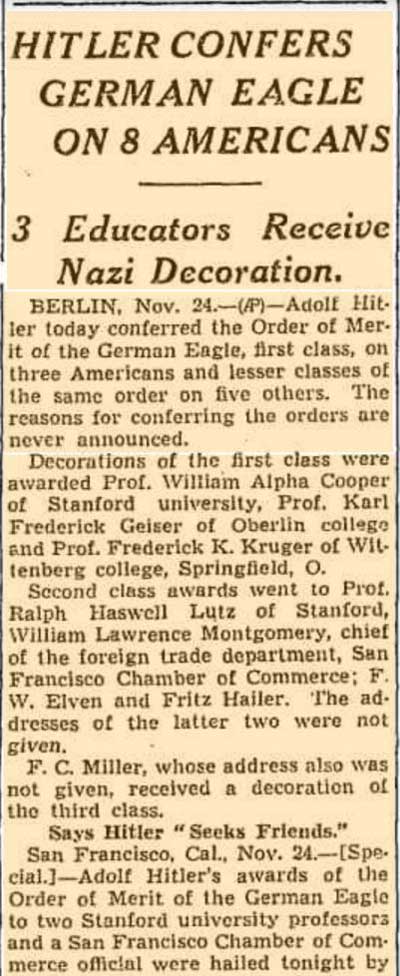 |
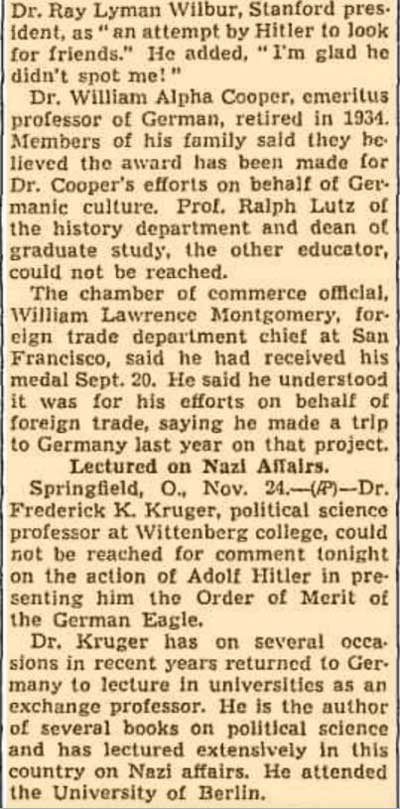 |
|
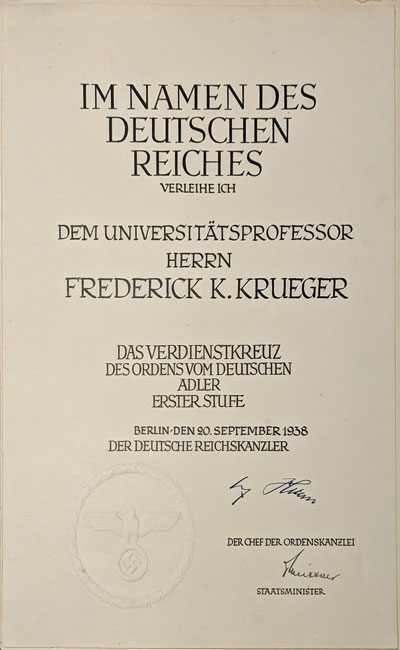
One of those award
documents |
Figure 11: Excerpt of the
Chicago Tribune
Further awards to Americans
occurred in 1938.
[General
Motors,] as owner of Germany’s largest automobile
factory, General Motors was quite naturally a more
important factor in the Axis war effort than either
Ford or Chrysler, whose investments were
substantially less. GM’s participation in Germany’s
preparation for the war began as early as 1935. That
year its Opel subsidiary cooperated with the Reich
in locating a new heavy truck facility at
Brandenburg, which military officials advised would
be less vulnerable to enemy air attack. During
succeeding years, GM supplied the Wehrmacht with
Opel “Blitz” trucks from the Brandenburg complex.
For these and other contributions to wartime
preparations, GM’s chief executive for overseas
operations in 1938 was awarded the Order of the
German Eagle (first class) by Adolf Hitler
Ford was also active in Nazi
Germany’s prewar preparations. In 1938, for
instance, it opened a truck assembly plant in Berlin
whose “real purpose” according to U.S. Army
intelligence, was producing “troop transport-type”
vehicles for the Wehrmacht. That year Ford’s chief
executive received the Nazi German Eagle (first
class)5).
The order decorations:

Figure 12: German Eagle Order
crosses and medal 1st
type

Figure 13: German Eagle Order
2nd
Grade, Grand Cross Star and Star to the Merit Cross avers
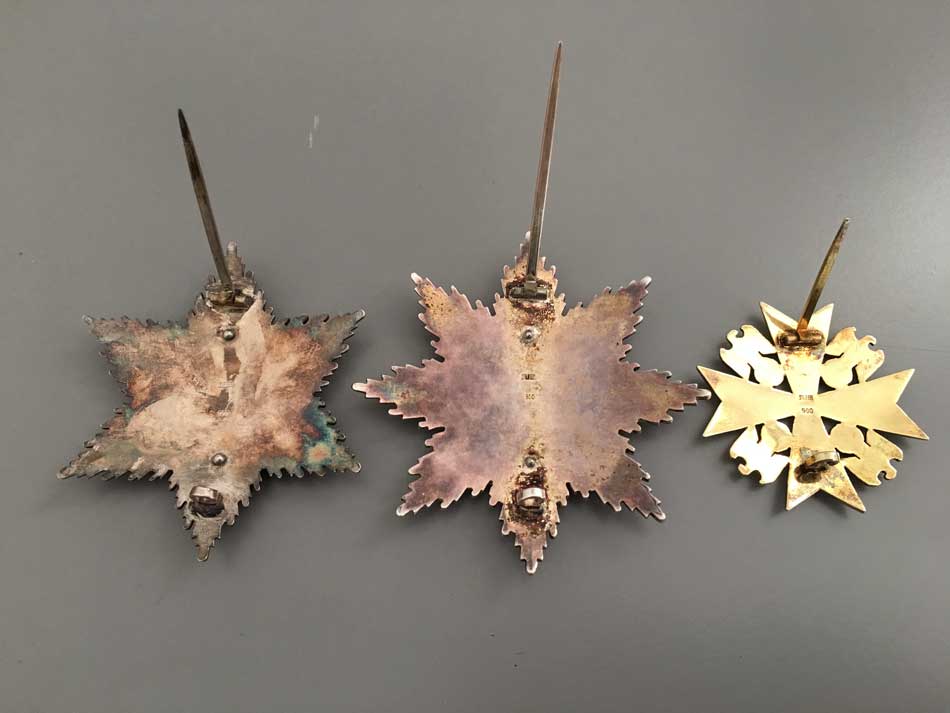
Figure 14: German Eagle Order
2nd
Grade, Grand Cross Star and Star to the Merit Cross revers
The
award documents of the 1st type came just like the
later ones in a handwritten addressed envelope
inside a cardboard folder. Receipt paperwork was
enclosed as well.
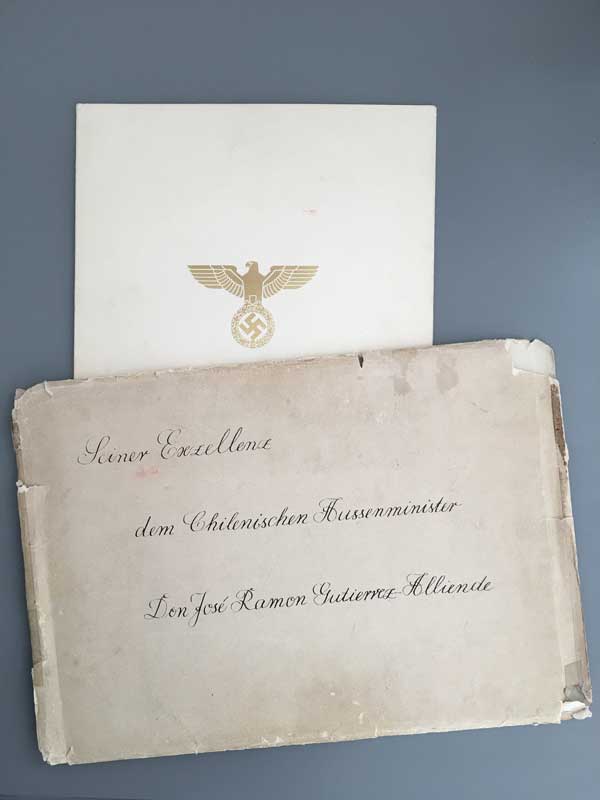
Figure 15: Envelope and Cardboard folder
Figure 16: Award Documents
Following are some 1st type decorations in
greater detail. You may click on the image to get to
ahigh resolution image for better detail and
comparison.
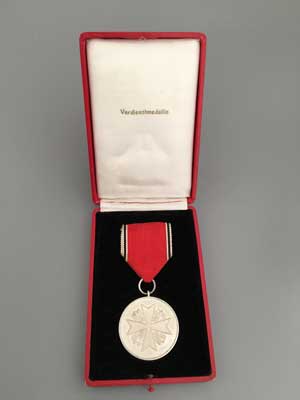
Merit Medal |
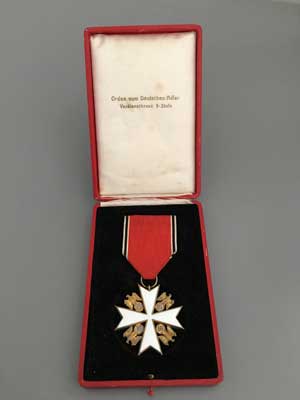
3rd Grade |
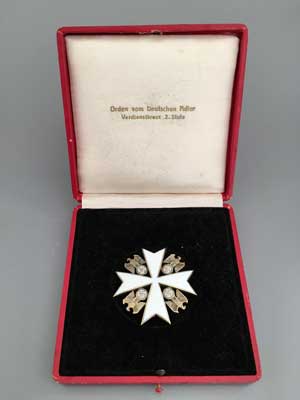
2nd Grade |
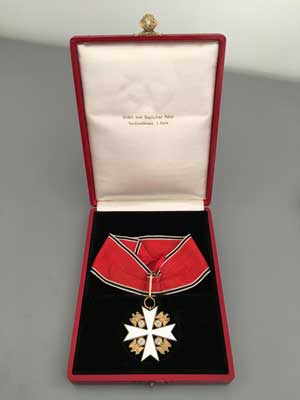
1st Grade |
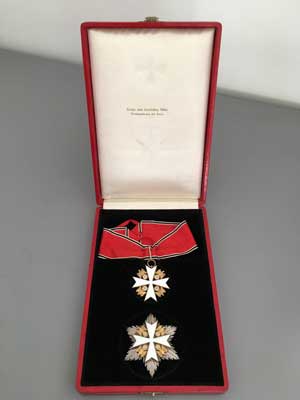
Merit Cross with
Star |
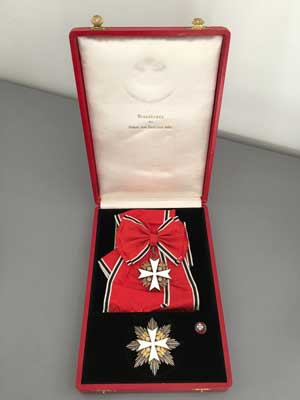
Grand Cross |
As mentioned above, the size
of the cases of particularly of the lower grades
were adjusted down. Here a comparison of 2nd Grade
cases. The earlier larger one houses a normal 2nd
Grade, the smaller one a 2nd Grade with swords.
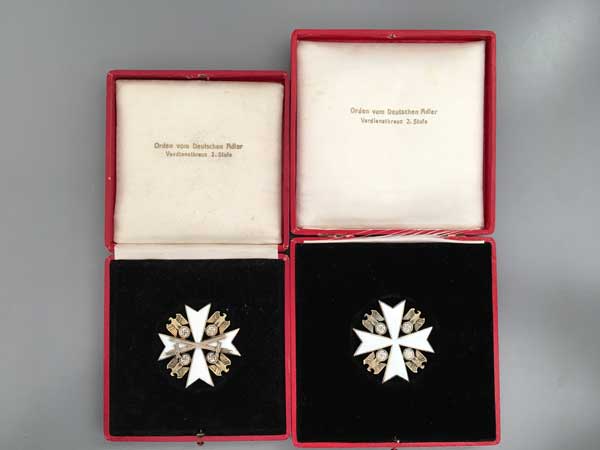
Footnotes:
1)
Reichskanzlei,
Akt. Betr. Orden und Ehrenzeichen – Allgemeine-Orden
1/Bd. 2 1934-1939, Bundesarchiv Koblenz
2)
„Deutsche Orden
und Ehrenzeichen bis 1945“, 2001, Band 4, Joerg
Nimmergut, Page 1892.
3)
„The
Meritory Order of the German Eagle“, 2016, Jesus M.
Franco Ruiz, Page 10.
4)
The
author does not know of any evidence that suggest
the Deschler or Deumer theory.
5)
“Critical
Evaluations in Business and Management”, 2003,
Alfred P. Sloan, Page 380
|
Why guess?! Get the expert's opinion at

|





